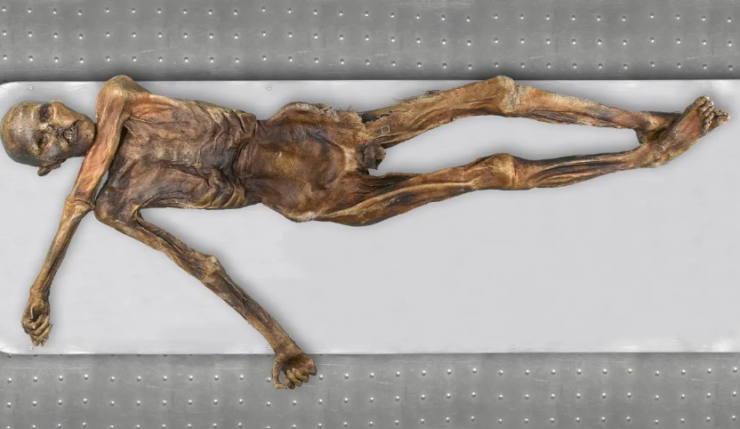Ötzi, also known as the Ice man, is a naturally mummified human who lived between 3350 and 3105 BC.
Ötzi was discovered by German tourists in the Ötztal Alps in 1991 (nicknamed “Ötzi” after the place of discovery). His remains are considered to be the oldest naturally mummified human discovered in Europe. And they provide unique insights into Chalcolithic (Copper Age) life on the continent.
Ötzi had an arrowhead lodged in his left shoulder, which was discovered by X-rays and a CT scan in 2001. This led to the theory that Ötzi was murdered and suffered multiple wounds before passing out from blood loss. However, there has been a lot of research done and there is still considerable debate about how he lived and how he died.
To discover more about Ice man Ötzi’s genetic background, scientists recently constructed a high coverage genome. Their findings, which were published in the journal Cell Genomics, show that he had dark skin, dark eyes, and a balding head.
“The genome analysis revealed phenotypic traits such as high skin pigmentation, dark eye colour, and male pattern baldness that are in stark contrast to the previous reconstructions that show a light skinned, light eyed, and quite hairy male.” said Johannes Krause from the Max Planck Institute for Evolutionary Anthropology, Germany.
The results show that the he’s look matched his current mummified state very well. Ötzi also had a noticeably higher percentage of early Anatolian farmer ancestry than any other contemporaneous European community around the 4th millennium BC, according to a more thorough and refined genomic analysis. This information suggests that Ötzi lived in a relatively isolated Alpine village with little genetic contact with hunter gatherer societies.
“The result that surprised us quite a bit was the presence of male pattern baldness supporting the absence of hair observed in the real mummy, and the rather dark skin pigmentation supported by the mummy,” said Albert Zink of the Mummy Institute in Bolzano, Italy.
Well preserved under natural conditions for those interested, the Iceman’s body and belongings are on display at the South Tyrol Archaeological Museum in Bolzano, South Tyrol, Italy.
Photo credit: Marco Samadelli Gregor
